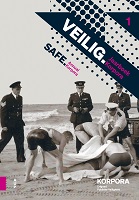Chapter Luchtalarm! Gas!
Abstract
Since poison gas was used during World War I, long-range bombers had been introduced and tensions were rising in Europe, the Air Raid Precautions Act was passed in the Netherlands in 1936. The legislation emphasised individual responsibility for self-protection. This meant that citizens had to buy a gas mask themselves. The Gas Mask Decree (1937) required all gas mask models for Civil Defence units and civilians to be approved by the Dutch State Arsenal. Facepieces and filter canisters had to be marked with the State Acceptance Number and year(s) of approval and production. This paper identifies and describes the gas masks used by police, fire brigades, Civil Defence units and individual citizens, 1931-1940. Three models are heavy, regular Army box respirators, whose filter containers are worn in a haversack on the chest. All the other models are lighter civilian gas masks, with an easily replaceable screw-on filter canister attached to the facepiece. The gas masks were carried in a basic satchel or cylindrical metal case. Two Dutch-made gas masks have a peculiar design: the Veritex gas mask’s facepiece has a swimcap type hood; the Hevea-Electro Model 128 gas mask’s facepiece has no outlet valve. Air is inhaled and exhaled through the filter canister.
Book
Veilig = SafeKeywords
gas mask, people’s mask, air attack, air raid precautions services, poison gas, mustard gasDOI
10.5117/9789048563739_breukersISBN
9789048563739, 9789048563746, 9789048563739Publisher
Amsterdam University PressPublisher website
https://www.aup.nl/Publication date and place
Amsterdam, 2024Classification
Netherlands
Dutch
Social and cultural history
Social and ethical issues


 Download
Download